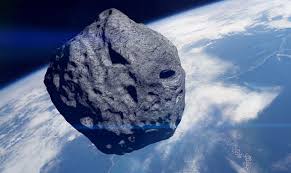When Meteors Shaped Life on Earth: A Billion-Year-Old Story Unveiled

Long before the Earth had any form of complex life, the planet was a chaotic realm of crashing meteorites, boiling oceans, and shifting landscapes. Around 3.26 billion years ago, one such massive space rock—estimated to be as tall as four Mount Everests—plummeted to Earth. The collision triggered a series of events that not only rocked the planet’s surface but also influenced the development of life, setting the stage for future evolution.
Unraveling Earth’s Deep Past
Nadja Drabon, an early-Earth geologist and assistant professor, has dedicated her career to deciphering what the world was like during these ancient times. Back then, Earth was pummeled by meteoritic bombardments, with only hardy, single-celled organisms like bacteria and archaea existing. Drabon’s research dives into fundamental questions about the early planet: When did the first oceans form? How did continents take shape? Did the violent impacts alter life’s evolutionary path?
Drabon’s latest findings, published in Proceedings of the National Academy of Sciences, focus on a major impact event known as S2, which left its mark in what is now the Barberton Greenstone Belt of South Africa. This region preserves the geological remnants of those cataclysmic days, offering a rare window into Earth's formative years. By meticulously examining rock samples just centimeters apart, Drabon’s team reconstructs the chaotic scene of the S2 impact and its consequences for early life.
The Day the Earth Stood Still
To grasp the magnitude of the S2 impact, picture a tranquil coastal environment. It’s a calm, low-energy place, much like the shallow waters off Cape Cod today. Then, in an instant, a colossal meteorite slams into the planet. The resulting impact unleashes a giant tsunami, ripping up the seabed and hurling debris from the land into the ocean. The energy released causes the top layer of the ocean to vaporize, while the atmosphere becomes superheated and cloaked in a thick dust cloud, blocking sunlight and halting any photosynthesis.
Amid the devastation, however, life was not defeated. Remarkably, Drabon's research suggests that bacterial life bounced back quickly. According to the analysis, bacteria that thrived on iron flourished in the chaotic aftermath. This was fueled by iron, which had been stirred up from the ocean depths by the violent waves, and phosphorus, delivered both by the meteorite itself and by increased erosion on land. These conditions allowed iron-metabolizing bacteria to multiply rapidly, even in a world that seemed uninhabitable.
A Surprising Silver Lining
Contrary to the common belief that meteorite impacts are solely disastrous for life, Drabon’s study paints a different picture. While it’s true that large impacts, like the one that occurred 66 million years ago, led to mass extinctions (most famously the dinosaurs), earlier in Earth’s history, these events may have played a crucial role in life’s development.
"We think of impact events as being disastrous for life," Drabon explains. "But what this study is highlighting is that these impacts would have had benefits to life, especially early on … these impacts might have actually allowed life to flourish."
Her team’s findings show that even though these early impacts were catastrophic, they also triggered beneficial environmental changes, creating new niches where life could adapt and thrive. The brief dominance of iron-metabolizing bacteria after the S2 impact demonstrates how life quickly exploited the new resources made available by the cataclysm.
Digging Deeper into Earth's Ancient History
The insights gained from this research come from the relentless efforts of Drabon and her team, who journey to remote mountain passes and carefully collect sediment samples that have preserved the history of ancient cataclysms. In the thin layers of rock, chemical signatures reveal evidence of events like tsunamis, which left behind traces of ocean mixing and land debris. These geological records, etched into the Earth’s crust over billions of years, offer clues about how life and the environment interacted during these turbulent times.
The Barberton Greenstone Belt is particularly valuable for researchers because it contains evidence of at least eight significant impact events, including the S2. This makes it an ideal site for understanding how early meteorite impacts influenced the course of life on our planet. Drabon and her team plan to continue their research here, aiming to unearth even more secrets from Earth’s distant past.
The Bigger Picture
The story of the S2 impact and its aftermath is more than just a tale of destruction—it’s a story about resilience and opportunity. While massive impacts undoubtedly caused chaos, they also reshaped the environment in ways that made it possible for life to evolve and diversify. In this light, meteorite events can be seen not only as agents of extinction but also as catalysts for change, sparking new beginnings in the history of life.
As research continues, we may uncover more ways that these ancient cosmic events shaped the evolution of life on Earth. And who knows—perhaps they even set the stage for the eventual emergence of complex life forms, including us.
Story Source:
Materials provided by Harvard University. The original text of this story is licensed under a Creative Commons License. Note: Content may be edited for style and length.
Journal Reference:
- Nadja Drabon, Andrew H. Knoll, Donald R. Lowe, Stefano M. Bernasconi, Alec R. Brenner, David A. Mucciarone. Effect of a giant meteorite impact on Paleoarchean surface environments and life. Proceedings of the National Academy of Sciences, 2024; 121 (44) DOI: 10.1073/pnas.2408721121

0 Comments